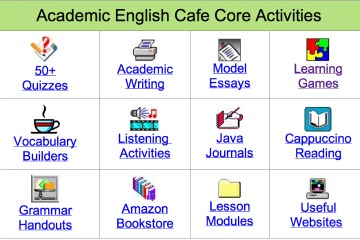Esl Conversation Dialogues For Intermediates
All Talking Point conversation worksheets are designed for use with students who have reached Pre-Intermediate level, though they are also very successful. Medical Conversation Topics for ESL / EFL. Updated on December 9, 2016. Contact Author. English Conversations for Medical Students. Doctors and Patients. What information do you look for when taking a patient’s history? How are medical histories stored?
Listening seems like a passive activity.
ESL teachers know better than anyone — that’s not exactly true.
Language learners need to actively develop their listening skills.
Listening is every bit as vital to learning as reading, writing and speaking.
The ability to overlap and intersect design elements has been enhanced with a new option to interactively blend reliefs. 
But it often slips through the cracks in the classroom.
Listening exercises are regularly brushed over, confined to the dreaded audio CD that accompanies the textbook.
You yawn as you press play.
And then you start listening to the slow, staged dialogues involving Mario and Margaret’s outing to the store. You know the ones, right?
One thing’s for sure: if you’re bored, your students definitely are.
Whether you’re using a range of audio resources or you’re simply getting students to speak to each other, listening is a great opportunity to expose students to a variety of accents, as well as to have fun whilst learning.
So hold onto your seat belts, it’s time to make listening practice awesome!
10 Awesome Activities to Improve Intermediate ESL Students’ Listening
The ten activities listed below aim to get your students thinking, moving and working together.

And, of course, a competitive element never hurts, does it? The idea is to vary your activities, never allowing for the students to get overly comfortable or familiar with how an exercise is going to look.
Keep it moving, people!
1. Relay the message
This classic game, otherwise known as “running dictation,” is a great active ice breaker, as well as a natural way to introduce a topic.
The game plan:
- Put students in pairs or groups of three, assigning one (or two) as runner and one as writer. Sit the writers at tables at one end of the room.
- Stick pre-printed messages at the other side of the room, one for each group or pair. These messages can be the same or different, easy or difficult, long or short, depending on the level and goals of the class.
- When you shout the word “go,” the runner runs to the message, reading and remembering what they can. This can be as much as a few sentences or as little as one word. The aim is to be able to relay it accurately to the writer.
- The runner goes back to the writer to relay the part of the message that they memorized. The writer (you guessed it!) writes it down.
- Repeat until the message is complete. Teams score points for speed but more importantly for accuracy of spelling and punctuation.
2. Back-to-back interview
What better way to improve listening skills than to listen to each other? This is a great activity for practicing listening without relying on lip reading or actions. It also incorporates speaking practice, thus killing two birds with one stone. You can use this activity to introduce famous people you want to talk about during your lesson.
The game plan:
- Pairs of students sit back-to-back, one as the interviewer with a list of questions.
- The interviewee is given a famous person to role play, with a list of answers. (This can also be done as an exercise to learn more about each other personally. For example, at the beginning of a course when students don’t know each other well).
- The interviewer asks the questions, writing down the answers as they go along.
- The fastest interviewer to work out who they’re talking to wins!
3. Follow the directions
This activity provides excellent practice which will prepare students to ask for directions in a foreign country. It allows students to gain audio rather than visual practice with receiving directions, giving them the ability to understand step by step instructions.
The game plan:
- Provide students with a street map, either a real one or something tailored to the activity and their level. You can even go crazy and create a big one for the classroom floor!
- Split the students into teams, and have one person go at a time.
- Read instructions for the student to follow, such as “go straight two blocks.” To win a point, the student must successfully navigate the map until they find the right store, the lost friend or the buried treasure.
4. Telephone
In this game, students are responsible for listening carefully to their peers as well as successfully relaying a message. It encourages students to determine similar sounding words from one other, and can be used as a starter activity to introduce any topic.
The game plan:
- Create two teams of students and set up both teams in lines. The end of each team line should be at the whiteboard.
- Whisper a word or sentence to the student farthest away from the whiteboard, and then have them whisper the message they heard to the next student. Each student whispers to the next until the end of the line.
- The last student writes the message on the board. The winner is the team with the most accurate spelling, pronunciation and content, although bonus points for originality and hilarity may be awarded!
5. Minimal pairs card hold-up
Improve your students’ knowledge of proper pronunciation with this quick-fire game, which is good for reinforcing phonics lessons.
The game plan:
- Give a set of pre-prepared word cards to each team (there can be as many teams as you want, depending on how many card sets you have). Go here for a useful list of minimal pairs.
- Students spread the word cards out on a table.
- Call a word out. For example: “feet!” The students have to search their decks and hold up that word’s card as fast as possible.
6. Movie clip quiz
You can incorporate movies into just about any lesson, giving students a welcome moment of relaxation and respite from learning (or so they think!). Movies and TV shows provide a more authentic speed of real world speech.
Need inspiration for videos to use in class? Check out FluentU’s ever-growing collection of English language videos taken from real-world sources like children’s shows, Disney movies, music videos, funny YouTube videos, inspiring talks and more. We’ve got plenty of bite-sized clips which are perfect for in-class activities.
Using FluentU, students will be more engaged in this activity and they’ll learn the material even better. Not only does FluentU offer video, but it offers scaffolding that isn’t available anywhere else; students will find authentic content approachable, interesting and totally within reach. Plus, with such a diversity of great content you’re guaranteed to find something that your class will love.
The game plan:
- Give students a question to answer, dividing them into teams.
- Begin watching the clip. To play, students must pay close attention and stand up when they hear the answer to the question. Pause the movie and see if the first person who stood up knows the correct answer.
- Ask the second question. Repeat. Alternatively, you can give the students a list of questions to answer and allow the clip to play through entirely. Then you see who has the most correct answers at the end.
7. Song gap-fill
Songs are a great way to engage reluctant listeners, as they can be tailored perfectly to fit the preferences of the students. Why not use the latest pop song? Lyric repetition is welcomed here!
The game plan:
- Give each student/pair the song lyrics with some words missing. To make it easier you can put the missing words in a box at the top of the page.
- Play the song, pausing if necessary. The aim is for the students to fill in the missing words.
- Once at the end, go through the answers to see which student/pair got the most correct.
8. Order-the-lyrics
This activity is a variation on the above, giving students practice in noticing the subtle differences between lyrics in music.
The game plan:
- Pairs get a set of the song lyrics cut up into lines.
- As they listen to the chosen song, they have to put the lyrics in the right order on the table. Repeat the song if necessary. You can always have a sing-along after the activity is completed!
9. Listen and throw
Of course, there’s no reason why you shouldn’t go back to your trusty textbook audio CD. Go ahead, and spice up the accompanying activities to make this CD even more valuable as a learning tool. In this exercise, students are listening for a specific answer to a question in an audio dialogue.
The game plan:
- Sit the students in a circle and split them into three or four teams.
- Give each individual a piece of paper that’s their team color. Have them scrunch the paper into a ball.
- Place three baskets in the middle of the circle, each with a possible answer written on it.
- Ask a question relating to the listening exercise — this should preferably be something that appears near the end of the dialogue. For example, “Whose birthday is it?”
- Students listen to the dialogue and throw their paper ball when they know the answer. Count the colors in the correct basket to determine the winner.
10. Slap the picture
This activity uses friendly competition to encourage sharp listening and quick reaction times. A good activity for when students are getting tired or losing concentration.
The game plan:
- Students sit opposite each other in pairs, with pre-prepared words in between them. There should be no more than eight words, and students should look at them first to familiarize themselves.
- As they listen to a chosen dialogue, they have to slap the correct word when they hear it. Fastest slap wins a point! They can keep a tally as they go along to see who the winner is.
Whatever the activity, whatever the age or level, the most important thing is for your students to stay engaged by being challenged, doing something new and having fun.
And One More Thing…

Searching for fun, authentic videos to boost your students’ English listening skills? Check out FluentU!
It’s got a huge collection of authentic English videos that people in the English-speaking world actually watch on the regular. There are tons of great choices there when you’re looking for songs for in-class activities. You’ll find music videos, musical numbers from cinema and theater, kids’ singalongs, commercial jingles and much, much more.
Intermediate English Conversation Dialogue
On FluentU, all the videos are sorted by skill level and are carefully annotated for students. Words come with example sentences and definitions. Students will be able to add them to their own vocabulary lists, and even see how the words are used in other videos.
For example, if a student taps on the word “brought,” they’ll see this: Tum mere ho is pal mere ho youtube.
Plus, these great videos are all accompanied by interactive features and active learning tools for students, like multimedia flashcards and fun games like “fill in the blank.”
English Dialogues For Intermediate Level
It’s perfect for in-class activities, group projects and solo homework assignments. Not to mention, it’s guaranteed to get your students excited about English!

The full FluentU video library is available on any computer or tablet, and users can even download the app at the iTunes and Google Play store.
If you liked this post, something tells me that you'll love FluentU, the best way to teach English with real-world videos.
